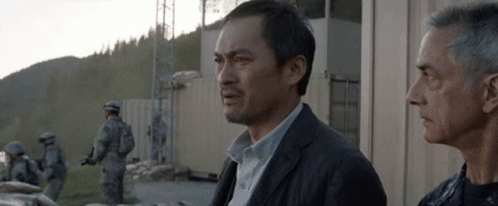/cdn.vox-cdn.com/uploads/chorus_asset/file/24711065/fake_fauci_trump.jpg)
DeSantis attack ad uses fake AI images of Trump embracing Fauci
US politicians continue to normalize AI deepfakes
By James Vincent, a senior reporter who has covered AI, robotics, and more for eight years at The Verge.
Jun 8, 2023, 8:21 AM EDT
:format(webp)/cdn.vox-cdn.com/uploads/chorus_asset/file/24711065/fake_fauci_trump.jpg)
The attack ad features three images showing Trump embracing Fauci. Image: The Verge
The campaign backing Ron DeSantis as Republican presidential nominee in 2024 has used what experts identify as AI-generated deepfakes in attack ad against rival Donald Trump.
On June 5th, the “DeSantis War Room” Twitter account shared a video emphasizing Trump’s support for Anthony Fauci, a former White House chief medical advisor and key figure in developing the US response to COVID-19. Fauci has become a hated figure in right-wing politics, particularly among the anti-vax movement, and the attack ad seeks to grow this base of support for DeSantis by portraying Trump and Fauci as close collaborators.
The video includes real clips of Trump discussing Fauci and a collage of six pictures of the two men together. Of the six images, three appear to be AI-generated, showing Trump embracing Fauci. In the collage below they are top-left, bottom-middle, and bottom-right.
:format(webp)/cdn.vox-cdn.com/uploads/chorus_asset/file/24710968/Screenshot_2023_06_08_at_11.56.27.png)
The attack ad features a collage of Trump and Fauci. Three of the six images appear to be generated by AI. Image: Twitter / DeSantis War Room
The fakes were first identified by AFP, who note that the real images in the collage above can be seen here, here, and here. The three fake images show no results in reverse image searches and have a number of tells that suggest they are AI-generated.
These tells include glossy and blurred textures (particularly in the hair and flesh of the two men), physically unrealistic poses (particularly in the top-left image), and an inaccurate reproduction of the White House press briefing room and its decorations.
For example, in the top-left image, you can see a recreation of the sign that appears behind the press briefing podium and that, in real life, says “The White House, Washington.” You can see this sign in this picture from March 27th from Getty Images:
:format(webp)/cdn.vox-cdn.com/uploads/chorus_asset/file/24710998/Screenshot_2023_06_08_at_12.15.19.png)
The sign that appears behind the podium of the White House Press briefing room. Image: Chip Somodevilla/Getty Images
Compare this to the sign that appears in the top-left image from the DeSantis ad. The shade of blue is different and the text is nonsense. (Recreating legible text is a challenge for current AI image generation systems.) Look at the image more closely and you can also see how Trump and Fauci’s faces are unrealistically posed, almost overlapping one another, and how Trump’s hair is oddly smooth and featureless:
:format(webp)/cdn.vox-cdn.com/uploads/chorus_asset/file/24710995/white_house_ai_fake_desantis_details.jpg)
The top-left image from the collage used in the DeSanti ad. Examining details close show the hallmarks of an AI generated fake. Collage: The Verge
:format(webp)/cdn.vox-cdn.com/uploads/chorus_asset/file/24711020/trump_hair_closeup.jpg)
Trump’s hair is already uncanny, but AI recreations don’t do it any favors. Collage: The Verge
Hany Farid, an expert in image forensics and professor at the University of California, told the AFP that it was “highly likely” that the images were fake, particularly as they could not be found in reverse image searches.
Digital media forensics expert Siwei Lyu came to the same conclusion, noting abnormalities in the three images. “I am pretty sure these are not real photos,” Lyu told the AFP.
The “De Santis War Room” Twitter account was launched last August by DeSantis’ political aide Christina Pushaw, and its use of AI shows the increasing normalization of deepfakes in US politics. Earlier this year, Donald Trump shared an AI-created image of him praying as well as an audio deepfake mocking DeSantis’ campaign launch on Twitter. After Joe Biden announced he would be running for re-election in 2024, the RNC published an attack ad that also featured AI-generated imagery.
Matt Wolking, a spokesperson for the Never Back Down PAC, which is supporting DeSantis’ campaign, told The Verge: “No campaign has pushed more misleading deepfakes, false photoshops, and outright fabrications than the Trump campaign. It is 100% true that Donald Trump empowered and embraced Fauci — he even gave him a presidential commendation.” When asked if the images were AI-generated or not, Wolking declined to answer, saying “You’ll have to ask the campaign.”
We’ve reached out to the campaign for comment. After this story was published, DeSantis’ aide Pushaw, who describes herself as the “rapid response director” for the campaign (the “DeSantis War Room” Twitter account says it provides “Rapid Response for @RonDeSantis”), tweeted a screenshot of Trump sharing an edited image of DeSantis riding on the back of a rhino, captioning it “I think this might be an AI-generated image. Who knows?”
Although some recent uses of AI by Republican politicians are obvious fakes (e.g. Trump’s audio deepfake, which features the Devil and Adolf Hitler), campaigns continue to blur the line between parody and disinformation. With this latest example, the mixture of fake and real images in a single collage makes the distinction even harder. It takes what is a plausible narrative — of Trump and Fauci as friendly collaborators — and encourages viewers already inclined to believe this framing to see it as a well-evidenced truth. Deepfakes are helping politicians create their own reality.
Update, Thursday January 8th, 08:54AM ET: Updated story with comment from Matt Wolking and a tweet from Christina Pushaw.


